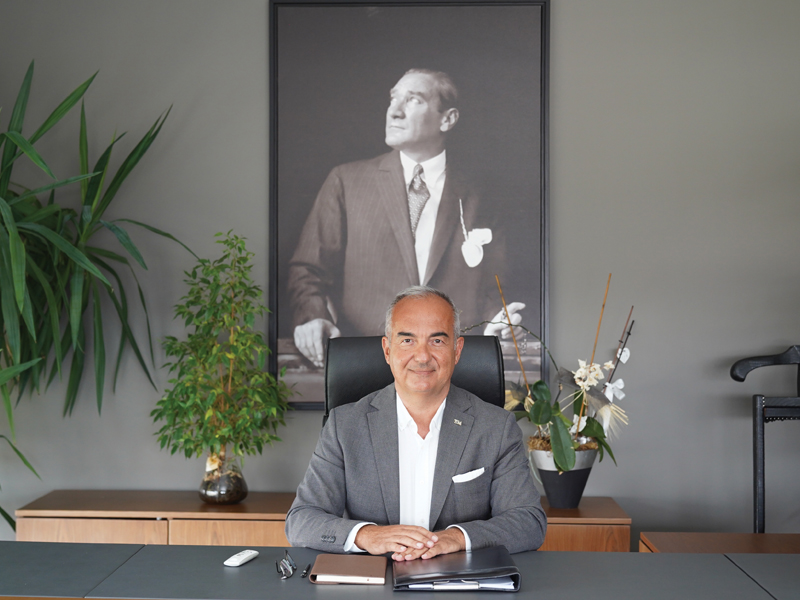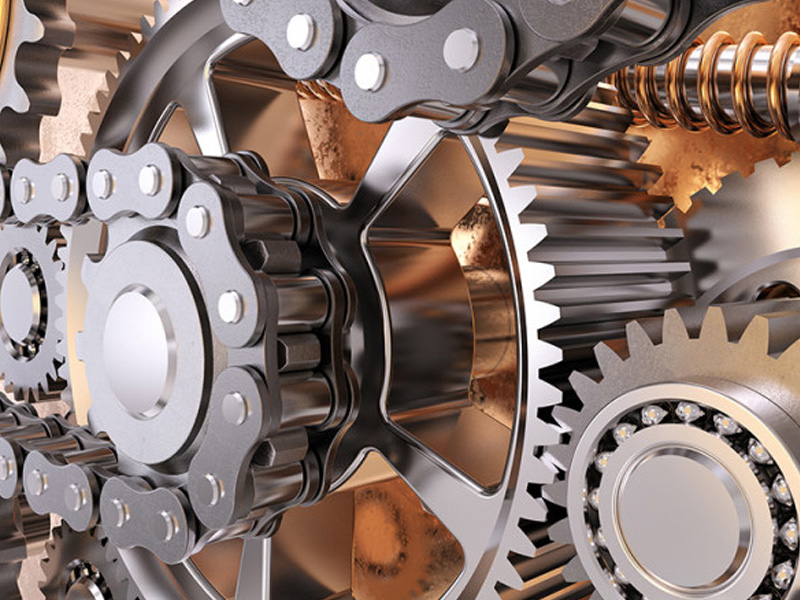



According to the consolidated data of the machinery manufacturing industry shared by the Machinery Exporters Association (MAİB), Turkey’s total machinery exports, including free zones, in the first four months of the year was 8.9 billion dollars. Stating that the annual producer price increase in the machinery and equipment industry is 65.5 percent, 10 points above the domestic producer price increase of 55.6 percent, Machinery Exporters’ Association President Kutlu Karavelioğlu said, “As in many parts of the world, we are the biggest buyer and user.” The public must comply with the savings measures of our Ministry of Treasury and Finance by preferring domestic machines in their purchases. We read that the decrease in machinery imports from China by 8.7 percent in the first 3 months of the year is the first sign that a general awareness is beginning to emerge. “We thank our Ministry of Commerce for following this issue closely,” he said.
According to the consolidated data of the machinery manufacturing industry, at the end of the first 4 months of the year, Turkey’s total machinery exports, including free zones, exceeded 1 million tons and reached 8.9 billion dollars. Machinery exports, which turned flat in the last quarter of last year and decreased by 3.6 percent in the first 4 months of this year, increased by 5.4 percent in the last 12 months, reaching 28.1 billion dollars. Again, in the 12-month comparison, the increase in machinery imports decreased to 12.9 percent and reached 45.5 billion dollars. In the first 4 months, when the decrease in machinery exports to Russia approached 20 percent due to the sanctions, exports increased by 30.7 percent in Saudi Arabia, 29.7 percent in Uzbekistan, and 15 percent in Egypt and Algeria. With a total export amount of nearly 2.5 billion dollars, Germany, Russia and the USA maintained their position as the top three markets in this period.
Touching on the reflections of the delay in monetary expansion steps on foreign trade expectations due to the limited effect of high interest rate practices in developed countries on inflation, Kutlu Karavelioğlu, President of the Machinery Exporters’ Association, said:
“Although no economic contraction is foreseen in Europe for the rest of the year, the stagnation in the manufacturing and construction sectors does not seem to pass quickly, especially in Germany. In Germany, where our machinery exports have increased by nearly 6 percent annually on average in the last 10 years, we are seeing a negative trend for the first time in many years, albeit at a limited level of 3.6 percent. The German economy, which shrank by 0.3 percent last year, is expected to lag behind 2022 figures this year as well. This trend in the region is also valid on a global scale, and when we look at the current world PMI statistics, it seems that the data for consumption and intermediate goods remains above 50, while for investment goods it remains below 50. “In an environment where the World Trade Organization has revised the increase in goods trade downwards and new global risks such as the China-Taiwan crisis emerge, it is a challenging year for investment goods manufacturers.”

“The main effect of inflation is on goods with high added value”
Pointing out that the manufacturing PMI data in Turkey is below 50 points, Karavelioğlu pointed out that there was a 4 percent shrinkage in machinery and equipment production in the first quarter of the year, when the production increase in the manufacturing industry was 5.6 percent, and said:
“Due to the contraction and increase in financing opportunities, it is natural for there to be a weakening in the investment and activity environment and for this to be reflected in the production cost indices. The annual producer price increase in the machinery and equipment industry is 65.5 percent, 10 points above the domestic producer price increase of 55.6 percent. These data indicate that our sector, which has always preferred to proceed with equity, is faced with a gradual deterioration in production scales and at the same time with higher increases in personnel costs than other sectors. While the import advantage due to low exchange rate continues, the machinery sector is more affected by domestic costs as it is the sector with the highest domestic value added rate. “When we include the gap in the dollar/euro parity due to the appreciation of the dollar in the world, the pressure of financial factors on our competitiveness becomes increasingly felt.”
“Savings should start with domestic machines”
Pointing out that quota applications for gold imports, which are among the important items in Turkey’s foreign trade deficit, created an impact of 6.5 billion dollars in a 4-month period, Karavelioğlu evaluated the import of electrical and non-electrical machinery as follows:
“Dear Minister Prof.Dr. In his monthly foreign trade statements, Ömer Bolat pointed out that the total exports of electrical and non-electrical machines increased by 0.4 percent in the first 4 months and reached 13.1, while their imports decreased by 2 percent to 21.6 billion dollars, drawing attention to the second largest item of the current account deficit. . Much more important and urgent measures need to be developed than the deficit in machinery, which is Turkey’s largest import item after energy, and the gold imports we limit with quotas. As in many parts of the world, the public, which is the largest buyer and user in our country, should definitely prefer domestic machines in its purchases and comply with the savings measures of our Ministry of Treasury and Finance. Beyond the purchasing costs of imported machines, they also turn into a permanent expense item with lifelong service needs such as service, maintenance and spare parts; We cannot overlook the fact that our competitors provide resources for technology development. We read that the decrease in machinery imports from China by 8.7 percent in the first 3 months of the year is the first sign that a general awareness is beginning to emerge. “We thank our Ministry of Commerce for following this issue closely.”

“We are ready to be the pilot sector in the fight against informality”
Stating that they have added a new one to the research they regularly carry out to identify the current problems of the manufacturing industry in Turkey and to propose solutions to the responsible organizations, Karavelioğlu concluded his words as follows:
“In our latest study titled Measuring the Unregistered Economy for Machinery and Sub-Sectors, we determined the informality rate in our sector as 23.68 percent. This rate was at 24.93 percent in our research in 2015.
Despite the rapid increase in the number of businesses and immigrants and the increasing effect of the pandemic on unregistered rates, an average improvement of about 5 percent in the last 7 years stands out. Nevertheless, in the face of increasing employment problems, companies that have to employ unregistered personnel or generate unregistered money to understate the salaries, provide this with low-priced invoices or non-invoiced sales, and then benefit from stock amnesties, continue to pose a threat to our scale and competitiveness with their multiplied profits. “We are ready to support the implementation of all measures developed by the state in this regard, to make our knowledge and experience available to the public through our sectoral associations, our Federation and our Union, and most importantly, to be the pilot sector in the fight against informality.”


